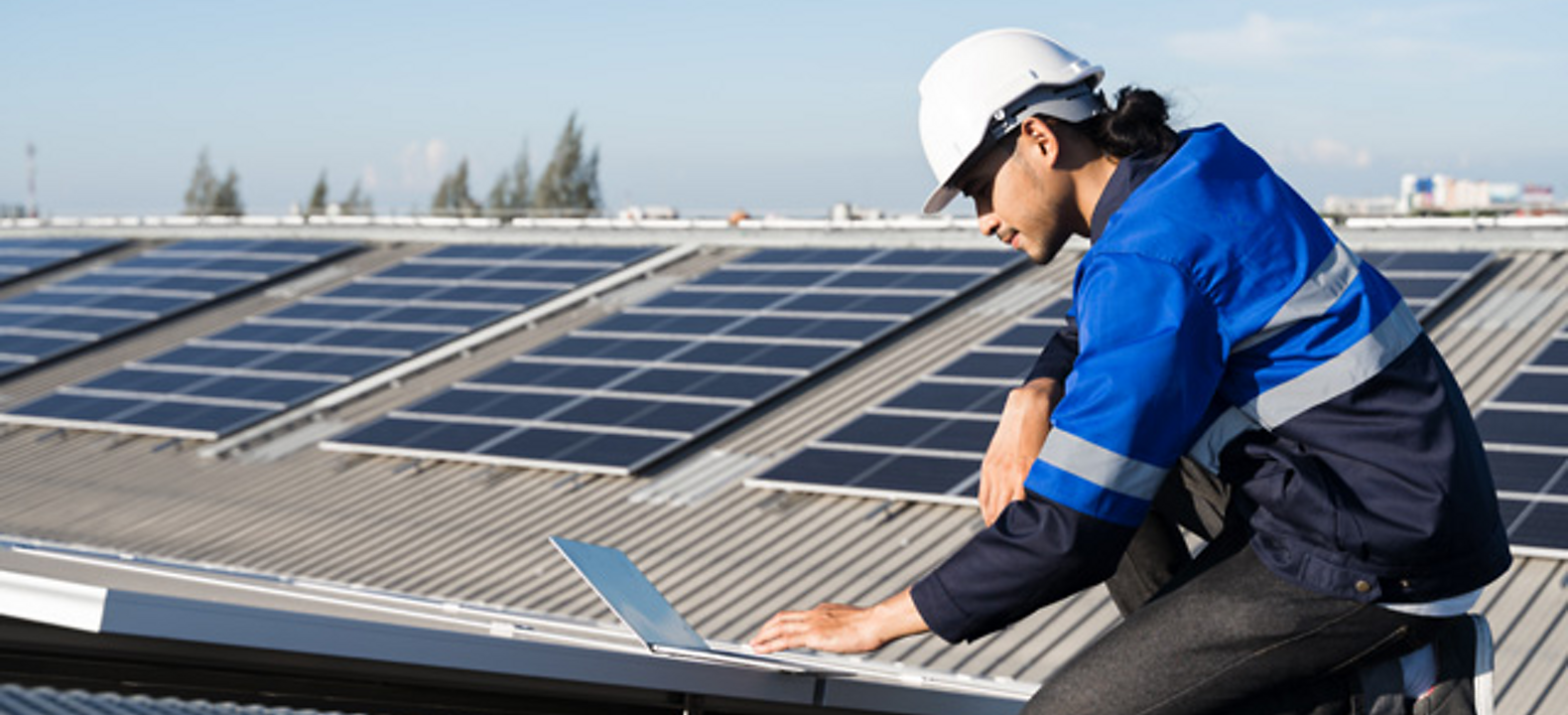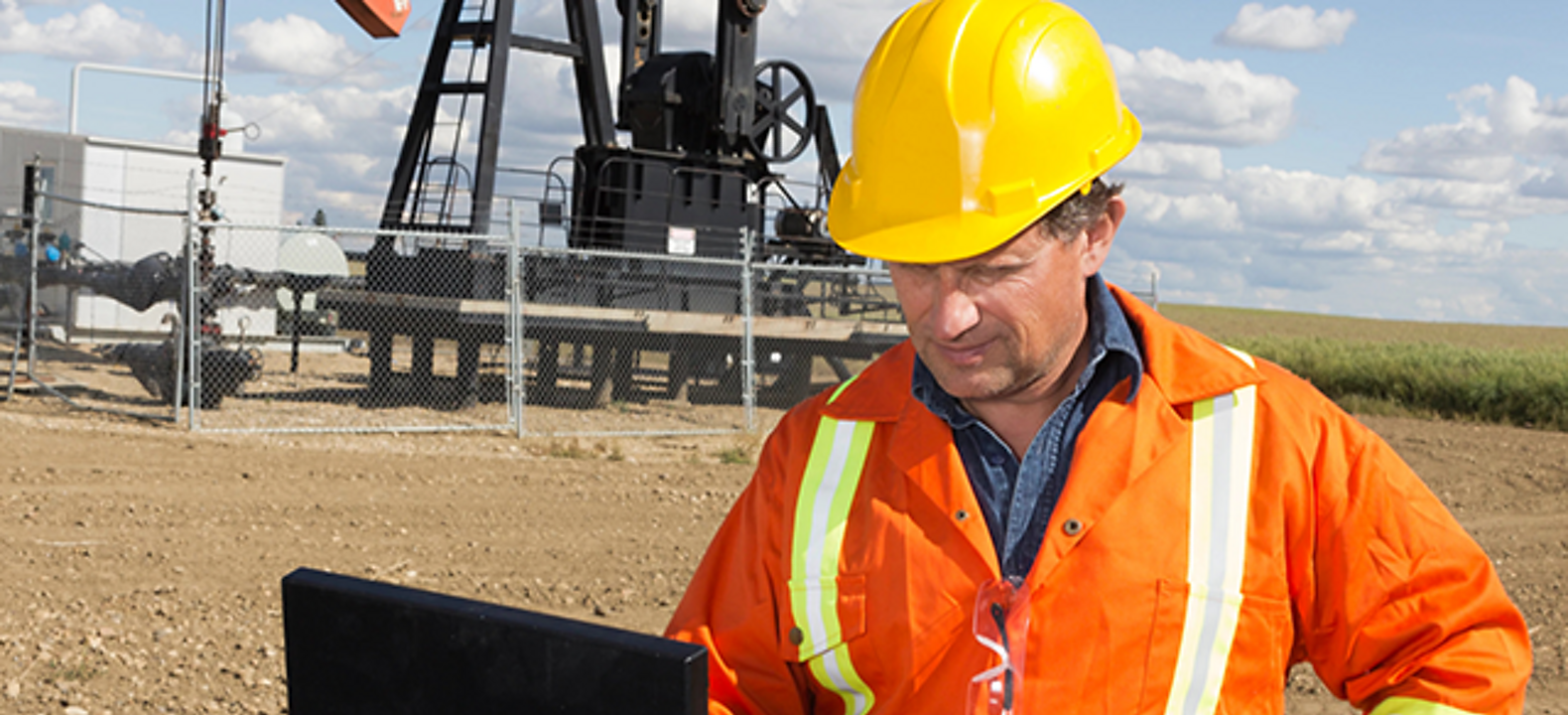OVERVIEW
Integrate new wireless technology into fieldwork for greater success.
Robust 5G connectivity helps deliver the performance, latency, and reliability utilities require.
Share this article:
Related content.
How 5G will support the evolution of distributed energy resources.
From influencing EV charging times to delivering critical information to encouraging renewable resource integration and community participation, 5G is here to help.

Connectivity advancements in the oil and gas enterprise.
For oil and gas companies, increasing productivity and efficiency is essential as operations move from isolated silos to integrated systems with streamlined processes.

We have the future technologies that are transforming the energy sector.

More than 50% of utility staff work in the field, often manually maintaining and managing assets.1 Their work—and the accurate and timely data they collect and analyze—is critical to successful operations and business continuity.
As demand for electricity grows, however, the utility industry must accomplish more with fewer fieldworkers—an issue exacerbated by the potential retirement of half the workforce in the next decade.2 This situation is changing the field service operations landscape. In response, utilities are increasingly integrating modern digital tools into fieldwork to streamline tasks and provide vital information to the back office. However, these tools require broad and reliable network coverage.
One major challenge: Utility territories span rural or remote areas with spotty coverage and complex urban environments that put workers deep inside high-rise buildings or underground in basements. In these locations, device connectivity may be difficult to maintain reliably.
The high-speed, broad-bandwidth, low-latency connectivity that 5G can deliver could be the key to meeting the current and future needs of digital transformation in power and utilities.
FOUR WAYS WIRELESS TECHNOLOGY MAY TRANSFORM FIELDWORK.
Here’s a look at four ways this wireless technology may transform fieldwork.
1. Workforce management
Modern digital tools like tablets, notebooks, and other handhelds can help utilities make the most of field service management. Devices connected in real time with 5G can boost the efficiency of collecting and transmitting rich data, automatically record job status and duration, and improve worker safety.
For instance, real-time analytics can help a resource manager identify where a crew and truck are, which jobs they can handle, and how to optimize their route. Line workers benefit from greater accuracy when tracking jobs and time and stronger confidence that the office knows their location and activity at all times.
Sensors can also provide workers with real-time visibility in challenging coverage areas without putting them at risk. While these types of sensors often use NB-IoT and LTE-M, the wireless technologies will be supported by 5G in the near future.
Investing in technologies that facilitate collaboration between the field and office—supported by fast, reliable 5G connectivity—helps utilities deploy their field teams more effectively and elevates the workforce experience.
2. Improving transmission and distribution
To aid in transmission and distribution health and planning, thousands of field technicians cover immense areas while performing maintenance and repairs, pole audits and upgrades, meter installations, and construction tasks. It’s crucial but time-consuming and expensive work.
Connecting digital devices with superior coverage and speed allows for operational modernizations like real-time video transmission and software syncing with back-office systems. Sophisticated tools can capture essential data that enriches communication, helping to refine recommendations and minimize downtime.
In a power outage or severe weather, the low latency and high reliability of 5G connectivity can also ensure everyone has the most up-to-date information at all times.
3. Drone utility inspections
To predict issues—not just react to them—some utilities use drones to inspect poles, towers, lines, and substations and acquire comprehensive intelligence from photos, videos, LiDAR, and thermographic sensors.
5G connectivity can offer the low latency and broad bandwidth needed for utility drones to transmit live data from even difficult-to-reach locations to the office. Senior technicians can view and inspect the images and/or videos to make decisions on the spot while work crews remain on-site to act on them.
The use of 5G-enabled utility inspection drones can improve field worker safety by eliminating the risks associated with manual inspections of potentially dangerous locations like towers, poles, and electrical lines. Additionally, real-time video monitoring enhances the quality of site inspections, while real-time decision-making saves time and money.
Find out about smart solutions for your business.
4. Virtual and augmented reality training
Virtual reality (VR) and augmented reality (AR) technologies can enhance field worker training and task performance while reducing costs and improving safety.
For example, TD World reports on VR modules that let workers experience working on and around high-voltage substation equipment and teach them safety practices without exposing them to danger during training.3
AR can also be a valuable tool for field crews when equipment is damaged or areas experience power outages. By superimposing digital information on real-world assets through smartphones or tablets, an on-site technician can request repair parts and crews with appropriate skills. Or an AR-enabled mobile device can relay information to an expert who provides instructions to field workers via video chat.
Both VR and AR require a network with low latency and ultra-fast data transfer to allow real-time communication between devices, the web, and field and back-office staff.
CONNECTIVITY TRANSFORMS UTILITY FIELD OPERATIONS.
These four use cases support different functions, but all will benefit from robust, consistent 5G connectivity to deliver the performance, latency, and reliability utilities require—which is particularly critical due to the increasing scarcity of qualified field workers. The network must be purpose-built to support emerging technologies and amply cover the utility’s service area.
With America’s largest 5G network, covering 320 million people across 1.8 million square miles,
5G: Capable device required; coverage not available in some areas. Some uses may require a certain plan or feature; see
1 Hohl, Pat. “Modernizing Utility Field Operations.” ESRI, ESRI, 29 Apr. 2020,
https://www.esri.com/arcgis-blog/products/configurable-apps/field-mobility/modernizing-utility-field-operations/. Accessed 15 Sept. 2022.
2 Clark, Kevin. “How Utility Leaders Are Handling an Aging Workforce.” Power Engineering, 22 June 2022, https://www.power-eng.com/powergen/how-utility-leaders-are-handling-an-aging-workforce/#gref. Accessed 15 Sept. 2022.
3 Odle, keegan, and Charlie Cox. “Virtual Reality to Improve Training of Utility Personnel.” T&D World, T&D World, 1 Sept. 2020, https://www.tdworld.com/smart-utility/article/21140189/burns-mcdonnell-virtual-reality-to-improve-training-of-utility-personnel. Accessed 15 Sept. 2022.
Want even more trends, insights, and success stories?
Interested in